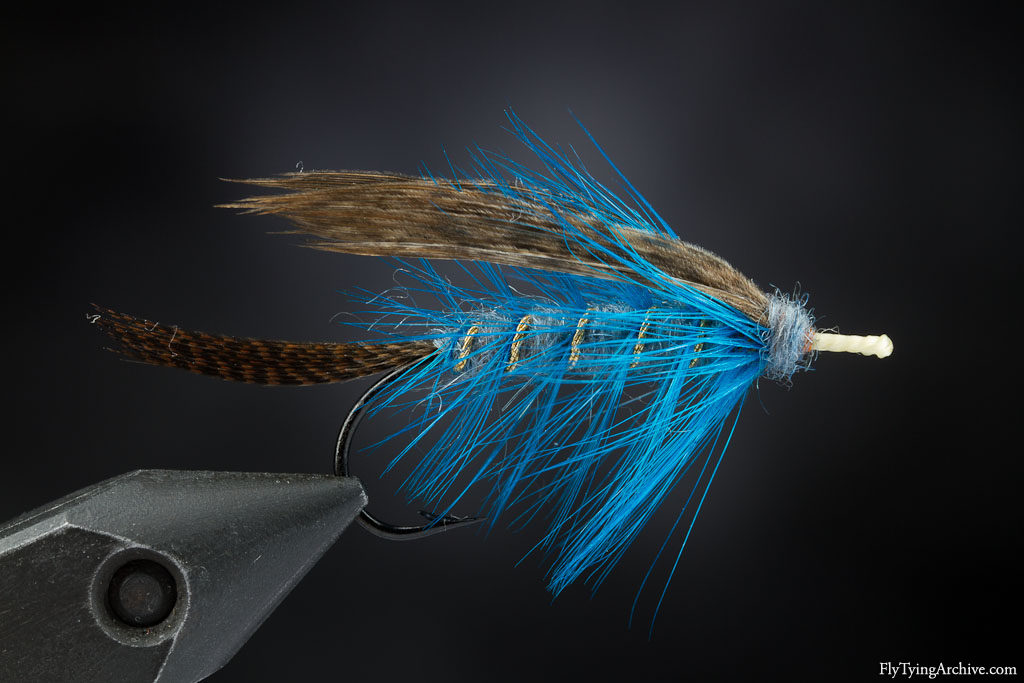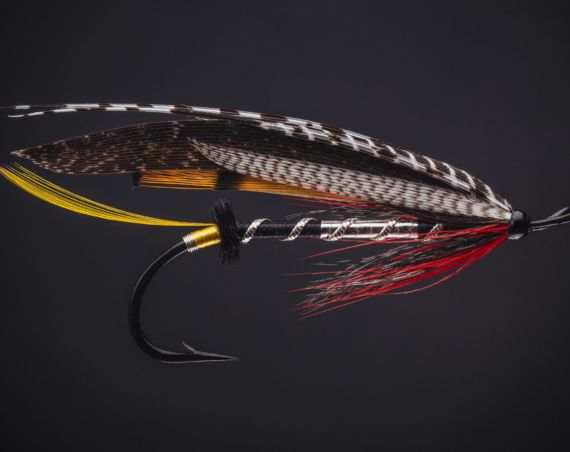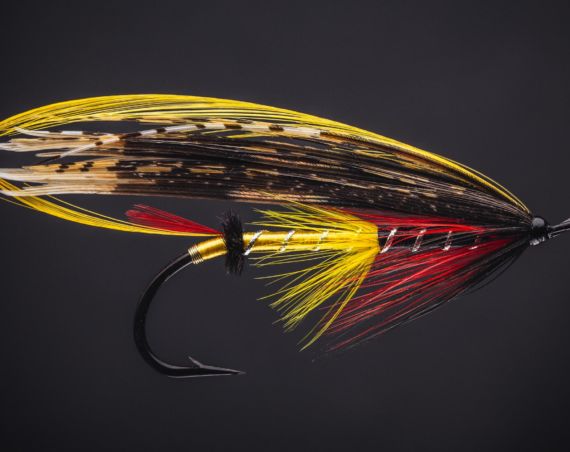No. 4 for salmon from The Driffield Angler
This was a practice fly I did on how to make a reversed wing on an salmon fly in hand. Not a common winging method today on feather winged flies but makes for a very durable wing. This was the second time I tried to tie the wing like this and first time I folded the wing over itself from the top. Felt a bit stupid this time as the friends I was tying with asked why I don’t fold it from the side. So now I folded the near wing first towards me and then to the correct position and folded the far side wing away from me. Much easier to do it that way. Here’s a link to William Blacker’s book from 1843 where there are actual flies glued to the pages showing you the stages. Here’s the description from the book.
1. The hook is tied on the gut.
2. The wings are tied on at the end of the shank, the reverse way.
3. The hackle is tied on at the point, with the tinsel to rib the body
4. The tail and body is formed.
5. The tinsel is rolled up, and then the hackle, in like manner.
6. The wings are turned in their proper place, the head formed, and secured with the tying silk.
The fly I tied however is not from Blacker’s book but instead from Alexander Mackintosh’s The Driffield Angler. I used Turkey on the wing instead of Kite. The proportions should probably be more like the ones on Blacker’s book with a lighter tail and a bit heavier wing.
A fourth fly for salmon, Alexander Mackintosh The Driffield Angler 1806
Wings: Speckled feather from a Kite or Buzzard’s wing.
Tail: Four strips of copper-coloured feather of the Mallard.
Rib: Small gold twist.
Hackle: Dark blue cock.
Body and Head: Light blue hog’s wool and a little lead-coloured mohair mixed.





